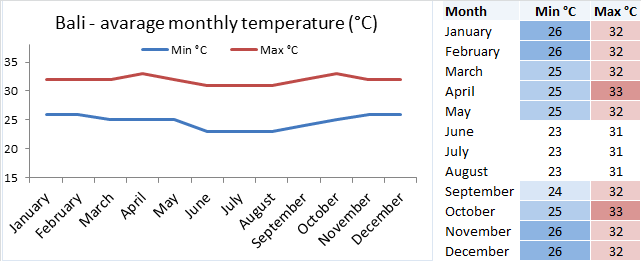Bali Weather Ultimate Guide
Bali Weather
Bali weather, a tropical paradise, is a destination that captivates with its lush landscapes, vibrant culture, and serene beaches. However, the weather in Bali plays a significant role in shaping the experience of its visitors. Understanding Bali’s weather patterns is crucial for planning your visit, ensuring you enjoy everything the island has to offer under the best possible conditions. This comprehensive guide will delve into Bali’s climate, seasonal variations, and provide tips on the best times to visit, helping you make the most of your Bali adventure.
Understanding Bali’s Climate
Bali enjoys a tropical climate, which means it experiences two main seasons: the dry season and the wet season. This climate type is characterized by warm temperatures year-round, with minimal variations in monthly temperature averages. The island’s proximity to the equator ensures that daylight hours are relatively constant throughout the year, offering ample sunshine for visitors.
Temperatures in Bali typically range from 20°C to 33°C (68°F to 91°F), making it a warm destination perfect for beachgoers and outdoor enthusiasts. However, the high humidity level, which can exceed 80% during the wet season, adds a sticky feel to the air, making it feel hotter than it actually is. This humidity drops significantly in the dry season, making the heat more bearable and the overall climate more comfortable for exploring the island’s myriad attractions.
The tropical climate also brings about a rich biodiversity, with lush forests, vibrant marine life, and a colorful array of flora and fauna, making Bali not just a beach destination but a nature lover’s paradise as well. The predictable weather patterns allow for planning activities around the seasons, whether it’s diving and snorkeling during the clear-water months of the dry season or enjoying the lush, green landscapes that come to life during the wet season.
The Seasons of Bali
Monthly Weather Breakdown









